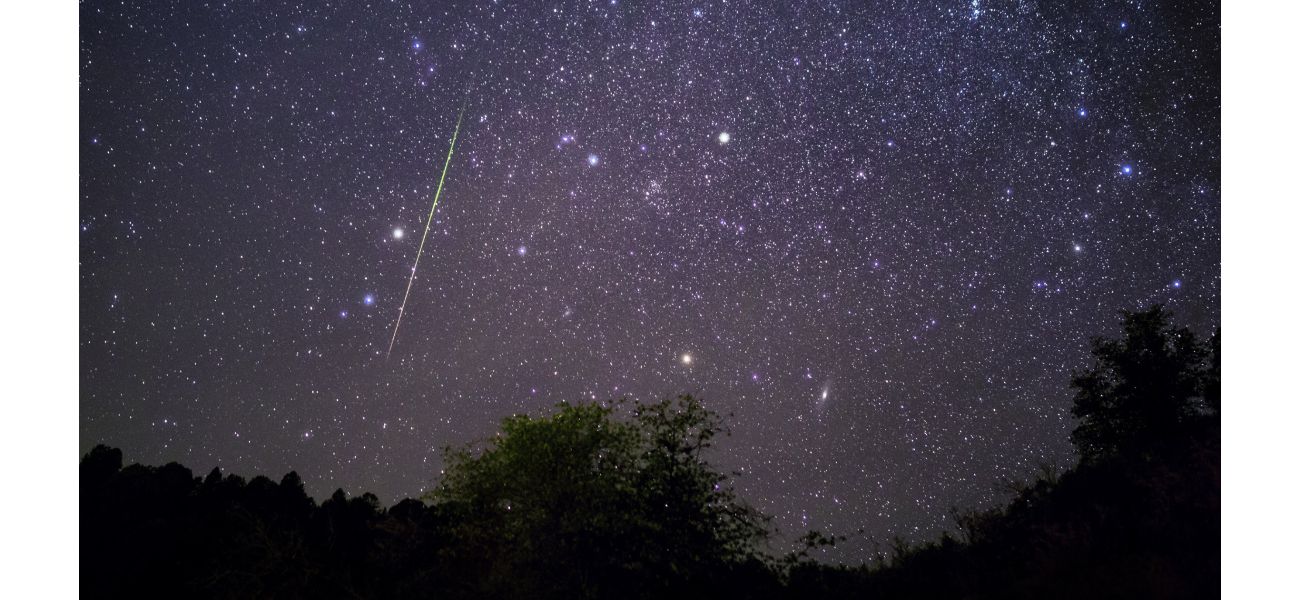Tips for viewing the Leonids meteor shower tonight in the UK and its peak time.
Full moon won't stop meteor viewing tonight!
November 16th 2024.

Tonight, nature lovers and stargazers alike are in for a treat as the much-anticipated Leonids meteor shower is set to make its appearance. Despite the bright full moon shining in the sky, the shower will still be visible to the naked eye. This dazzling display of fast and bright meteors, traveling at an impressive 70 kilometers per second, has been a topic of excitement throughout the month of November. However, tonight marks the peak of the shower, making it the best time to catch this spectacular show.
The Leonids meteor shower is named after the constellation Leo, from which the meteors appear to radiate. As we eagerly await the shower's arrival, we must also take into consideration the impact of the waning Beaver supermoon. The bright glow of the moon will unfortunately obscure some of the passing meteors, making it slightly more challenging to spot them. However, with some patience and a little bit of luck, we can still expect to see around 10 meteors per hour as fragments of Comet Tempel-Tuttle enter Earth's atmosphere.
So, how can one catch a glimpse of this celestial phenomenon? The answer is simple - find a spot away from street lights and light pollution, preferably on a hill, in the countryside, or on the coast. The darker the sky, the higher the chances of witnessing the illuminating display. As the meteors can be seen in all parts of the sky, it is recommended to find a wide open space that offers a view of the entire night sky. However, don't expect an immediate show. Patience is key, as it may take up to 10 minutes for our eyes to adjust to the darkness and fully appreciate the beauty of the meteor shower.
But what exactly causes a meteor shower? These colorful and glowing streaks are a result of Earth passing through a stream of tiny pieces of debris left behind by a comet. In this case, the comet responsible for the Leonids meteor shower is Comet Tempel-Tuttle. As these rocks and debris enter Earth's atmosphere at high speeds, the resistance from the air causes them to burn up and create a fiery tail, visible as a shooting star. It is truly a sight to behold.
For those who may miss the Leonids meteor shower, don't worry - there is always the next big one. The Geminid meteor shower is set to peak in mid-December, so mark your calendars and keep your eyes on the sky. Until then, let's all take a moment to appreciate the wonders of our universe and the breathtaking displays it has to offer.
The Leonids meteor shower is named after the constellation Leo, from which the meteors appear to radiate. As we eagerly await the shower's arrival, we must also take into consideration the impact of the waning Beaver supermoon. The bright glow of the moon will unfortunately obscure some of the passing meteors, making it slightly more challenging to spot them. However, with some patience and a little bit of luck, we can still expect to see around 10 meteors per hour as fragments of Comet Tempel-Tuttle enter Earth's atmosphere.
So, how can one catch a glimpse of this celestial phenomenon? The answer is simple - find a spot away from street lights and light pollution, preferably on a hill, in the countryside, or on the coast. The darker the sky, the higher the chances of witnessing the illuminating display. As the meteors can be seen in all parts of the sky, it is recommended to find a wide open space that offers a view of the entire night sky. However, don't expect an immediate show. Patience is key, as it may take up to 10 minutes for our eyes to adjust to the darkness and fully appreciate the beauty of the meteor shower.
But what exactly causes a meteor shower? These colorful and glowing streaks are a result of Earth passing through a stream of tiny pieces of debris left behind by a comet. In this case, the comet responsible for the Leonids meteor shower is Comet Tempel-Tuttle. As these rocks and debris enter Earth's atmosphere at high speeds, the resistance from the air causes them to burn up and create a fiery tail, visible as a shooting star. It is truly a sight to behold.
For those who may miss the Leonids meteor shower, don't worry - there is always the next big one. The Geminid meteor shower is set to peak in mid-December, so mark your calendars and keep your eyes on the sky. Until then, let's all take a moment to appreciate the wonders of our universe and the breathtaking displays it has to offer.
[This article has been trending online recently and has been generated with AI. Your feed is customized.]
[Generative AI is experimental.]
0
0
Submit Comment





